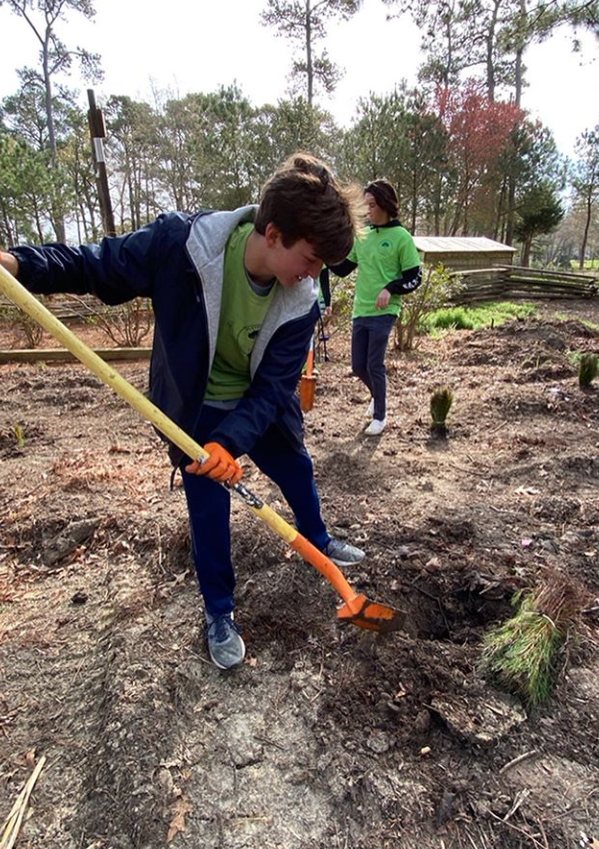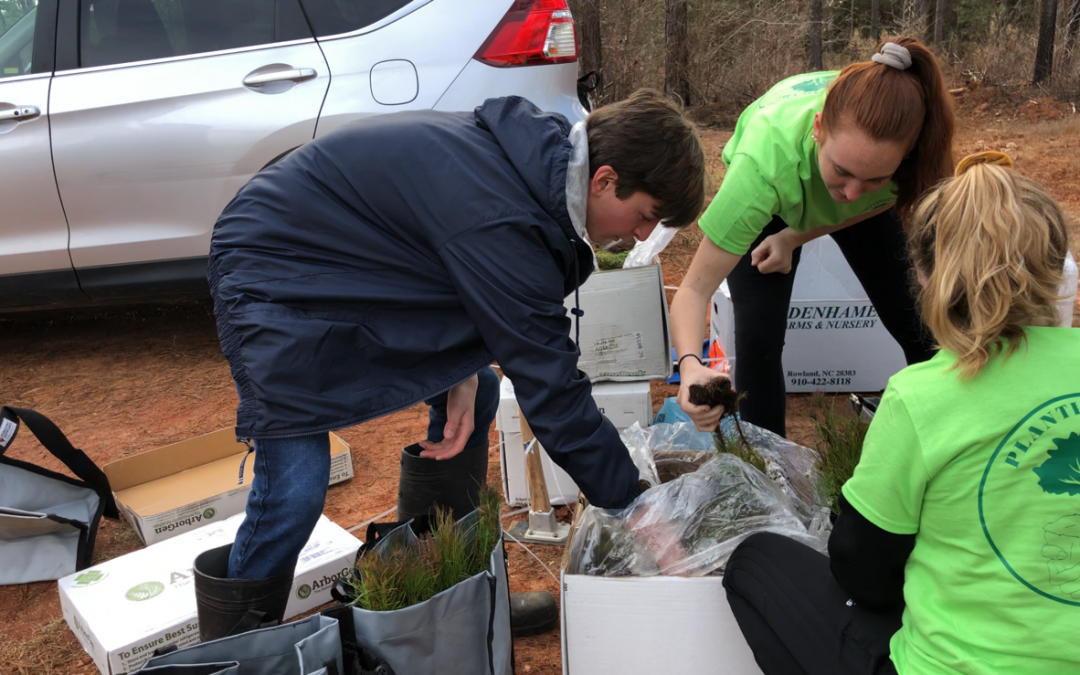By. Evan Nied
Planting the Seed
It may sound strange, but my motivation for starting Planting Shade was not a tree, but a hurricane.
In September 2018, I, like many others around the country, was following news of the numerous hurricanes that were threatening the coastal U.S. After one of those hurricanes forced many Virginians (including myself) to evacuate the state, I knew something had to be done. No, I knew I had to do something. But what? I didn’t know the first thing about environmentalism or the forces that cause hurricanes to be so powerful.
I contacted several environmental groups that are located close to where I live in Virginia Beach, including the Chesapeake Bay Foundation and Lynnhaven River Now. They recommended that I speak to the local arborist. After talking with the arborist, I concluded that planting trees was probably the most effective way that I could strengthen the area’s ecology and lessen the risks associated with flooding, pollution, and natural disasters. Further, planting trees is an accessible activity – it can be done by almost anyone, at a very low cost, and at several times throughout the year.
Growing a Nonprofit
A freshman at the time at Kempsville High School’s Entrepreneurship and Business Academy (EBA), I saw this tree planting idea as an opportunity to flex my entrepreneurship muscles. I quickly determined that establishing a group dedicated to tree planting and conservation could foster both community engagement and a movement toward environmentalism. My initial goal was to plant 1,000 tree seedlings, a rather modest goal but one that was doable while making a sizable difference.
In mid-November 2019, I started a club at my school to kick-start my tree planting ambitions. After a couple of weeks, I realized that running a tree planting operation as a school club was not as cut and dry as I thought. All funds would need to be directed through my school and all actions taken by the club would have to be approved by the administration. So I decided to go a different route and form a 501(c)(3) nonprofit. Forming the 501(c)(3) itself was a pretty daunting task. I had to form a nonstock corporation, obtain a tax ID number, and register to solicit charitable contributions. I was lucky to have my dad agree to pitch and help me navigate the process. For more information on starting a nonprofit, I recommend checking out this website.

Once the nonprofit was up and running, I set about creating a website and making calls to groups across Virginia to see if anyone would be interested in letting me plant trees on their property. This was easily the most difficult part of running Planting Shade. However, my hard work paid off and I was able to secure a partnership with TowneBank. Through them, I received substantial funding which I applied toward the purchase of seedlings from the Virginia Department of Forestry, as well as planting equipment and t-shirts. I also secured booth space at the Neptune Festival and the Virginia Flower and Garden Expo to help raise additional funding and spread awareness about Planting Shade’s mission.
Through my outreach efforts, I was able to give out 900 seedlings to political candidates, universities, schools, and campgrounds. To ensure the seedlings were planted as promised, I asked each person or organization that received a seedling to take pictures at the tree plantings and offered gift cards to those who posted their pictures on social media. Yet, as late February 2020 approached, I still didn’t have locations for over 400 seedlings. In my desperation, I enlisted the help of my EBA friends and soon hit gold. A friend of a friend was happy to let us plant on his property in Brunswick, Virginia. Going above and beyond, he ordered 1,000 seedlings himself, free of charge to us, to plant on his land. That still left 400 seedlings for us to plant in Virginia Beach. As luck would have it, however, I struck up a conversation with a groundskeeper at the Cavalier Golf & Yacht Club after attending a civic league meeting there. He was ecstatic to learn about Planting Shade’s mission and enthusiastically agreed to take the excess supply.
Ingredients for Success
Starting a nonprofit isn’t easy, especially when you’re a high school student! Luckily, EBA has been incredibly supportive of my endeavors and provided me with plenty of resources. For example, I was able to secure a senior intern to help out with the workload through the school’s internship program. At EBA, every senior must complete an internship of up to 300 hours to graduate. Since my nonprofit met EBA’s internship requirements, and there were plenty of students who didn’t have an internship by the end of their junior year, I was able to secure an intern at the beginning of the 2019 – 2020 school year. My teachers continue to challenge me through in-depth discussions on the state of my nonprofit and things I could change or improve on to be more successful. My peers have also been really helpful in offering me insights on how to reach volunteers and the best ways to contact community members. In fact, one of the most valuable lessons I have learned so far is to take a step back and ask myself, “If I were in this person’s shoes, what’s the best way to get their attention?”
Entrepreneurship is about the drive to succeed; with enough of it, anyone can be successful. One thing I learned about entrepreneurship is that we are all highly malleable creatures. The more you surround yourself with certain people, the more you will begin to resemble them and take on their characteristics. What’s great about EBA is that you are constantly surrounded by people who want to start their own companies and innovate in new fields. For someone who’s interested in pursuing an entrepreneurial venture, it’s incredibly important to surround yourself with people who dare to dream big and take hold of opportunities that are presented to them.

I imagine that it can be a daunting task to teach students the importance of an entrepreneurial mindset. Many students lack the maturity that’s needed to understand the importance of denying short-term gratification for long-term gain. Because of this, educators need to take a very hands-on approach to teaching entrepreneurship skills in the classroom. I recommend designing projects that give students lots of freedom and exposing students to a variety of ideas, technologies, and cultures. Ted talks are a great example of this. Creativity comes from using ideas from one realm and applying it to another.
Currently, Planting Shade is looking to expand its operations. Plans are underway to start chapters in Richmond, Virginia; Mountain View, California; and Melbourne, Australia. My goal is to establish 20 chapters by the end of next year and I am seeking students who are interested in participating. Interested students can reach me at evan@plantingshade.org or 757-754-7322.
Author Bio
Evan Nied is a sophomore at the Entrepreneurship Business Academy at Virginia Beach’s Kempsville High School. He is the founder and CEO of Planting Shade, a nonprofit whose mission is to increase the planting and growth of trees and tree canopy to prevent soil erosion. Evan works with local nurseries and distributors to give citizens greater access to seedlings and planting techniques so they can plant and grow trees of their own. Outside of Planting Shade, Evan serves as sophomore class president, plays on the varsity tennis team, and is on the DECA board at his school and the state board for his youth group.

